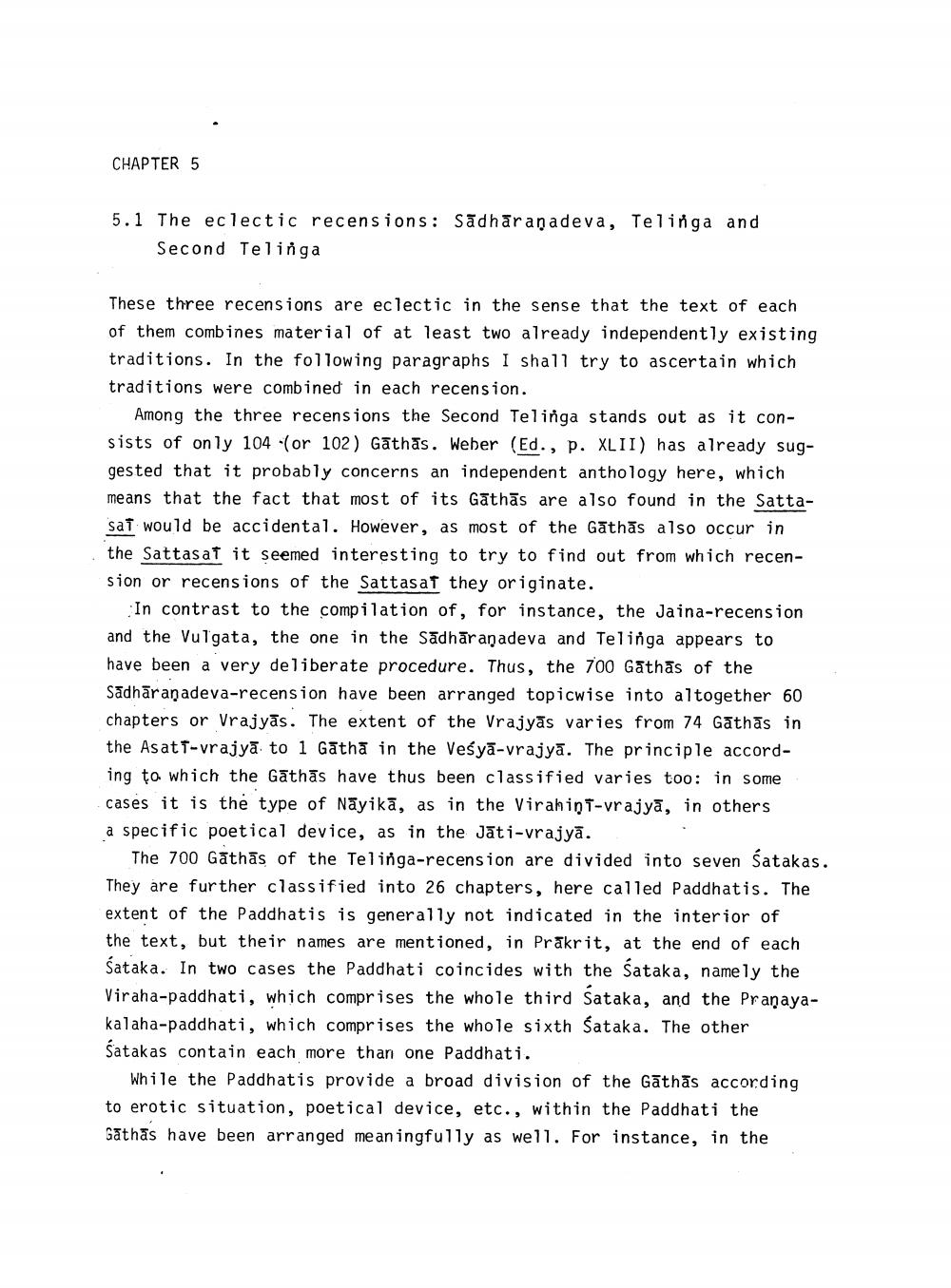________________
CHAPTER 5
5.1 The eclectic recensions: Sãdhāraṇadeva, Telinga and
Second Telinga
These three recensions are eclectic in the sense that the text of each of them combines material of at least two already independently existing traditions. In the following paragraphs I shall try to ascertain which traditions were combined in each recension.
Among the three recensions the Second Telinga stands out as it consists of only 104 (or 102) Gāthas. Weber (Ed., p. XLII) has already suggested that it probably concerns an independent anthology here, which means that the fact that most of its Gāthās are also found in the Sattasat would be accidental. However, as most of the Gathās also occur in the Sattas at it seemed interesting to try to find out from which recension or recensions of the Sattas at they originate.
In contrast to the compilation of, for instance, the Jaina-recension and the Vulgata, the one in the Sadhāranadeva and Telinga appears to have been a very deliberate procedure. Thus, the 700 Gathās of the Sadhāra adeva-recension have been arranged topicwise into altogether 60 chapters or Vrajyās. The extent of the Vrajyās varies from 74 Gathās in the Asat T-vrajyā to 1 Gatha in the Veśyā-vrajya. The principle according to which the Gathās have thus been classified varies too: in some cases it is the type of Nāyikā, as in the Virahin T-vrajyā, in others a specific poetical device, as in the Jāti-vrajyā.
The 700 Gathās of the Telinga-recension are divided into seven satakas. They are further classified into 26 chapters, here called Paddhatis. The extent of the Paddhatis is generally not indicated in the interior of the text, but their names are mentioned, in Prakrit, at the end of each Śataka. In two cases the Paddhati coincides with the Sataka, namely the Viraha-paddhati, which comprises the whole third Sataka, and the Pranayakalaha-paddhati, which comprises the whole sixth Sataka. The other Satakas contain each more than one Paddhati.
While the Paddhatis provide a broad division of the Gathās according to erotic situation, poetical device, etc., within the Paddhati the Gathās have been arranged meaningfully as well. For instance, in the




